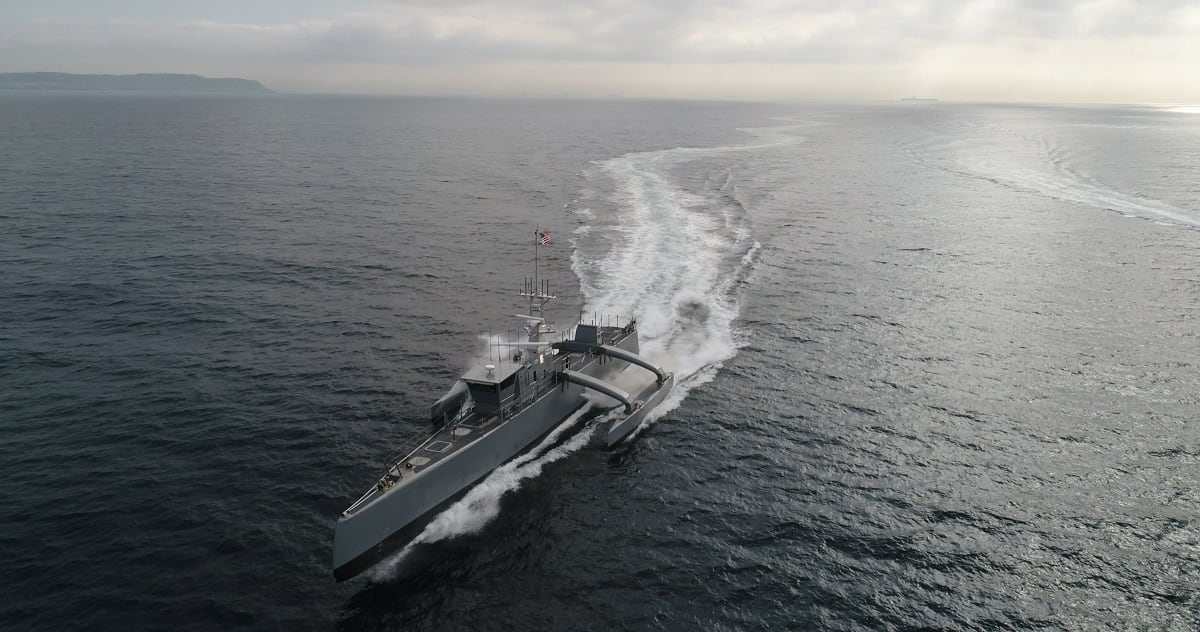ABU DHABI –The Chinese shipbuilder China Shipbuilding and Offshore International Company is developing a small unmanned surface vessel that China wants to function essentially like the uninhabited baby brother of a U.S. Arleigh Burke destroyer.
The JARI USV is a 20-ton, 15-meter boat that is orders of magnitude smaller than the People’s Liberation Army Navy’s manned Type -55 destroyer but has all the same mission areas: anti-submarine, anti-surface and anti-air warfare.
A model of the drone was on display at the International Defense Exhibition and Conference in Abu Dhabi.
'The JARI comes equipped with electro-optical sensor atop a superstructure, a phased array radar, a dipping sonar, eight small vertical launch system cells, a torpedo launcher and a forward mounted machine gun and rocket launcher for counter-surface engagements, according to a model displayed at the International Defense Exhibition and Conference.
RELATED

The U.S. Navy has been increasingly discussing its desire to pursue unmanned technologies to fight on the surface and subsurface, employing a network of sensor and shooter drones to penetrate anti-access environments such as the South China Sea. The JARI seems to be at least part of China’s response to that kind of warfare.
According to the product video, the drone appears to be modular and reconfigurable for the different mission areas, but it’s unclear what missions are permanently integrated into the system. In the video, JARI is shown alternately shooting down an aerial drone, sinking a submarine, machine-gunning a RHIB full of adversaries trying to steal it (after firing warning shots) and sinking a surface ship that looked a little like a littoral combat ship.
The boat tops out at 42 knots and has a range of about 500 nautical miles.
Last year, when China unveiled the design at a show in Africa, a representative told Navy Recognition that the drone was for use by the PLAN and for foreign sales and that a working prototype was being tested in China.
The drone can be controlled by either a shore station or from a mother ship, Navy Recognition reported.
There is no word on what kind of communication link the boat would have and where exactly humans would be in the loop. In the video it appeared that at least the forward-mounted machine gun would fire automatically at rapidly closing surface targets after firing a round of warning shots.
In an interview with Defense News, the U.S. Navy’s Surface Warfare director said the service was looking to field a family of drones that can network back to larger manned combatants, which could remain passive and not give away their position with larger sensors such as ballistic missile defense phased array radars lit off.
David B. Larter was the naval warfare reporter for Defense News.








